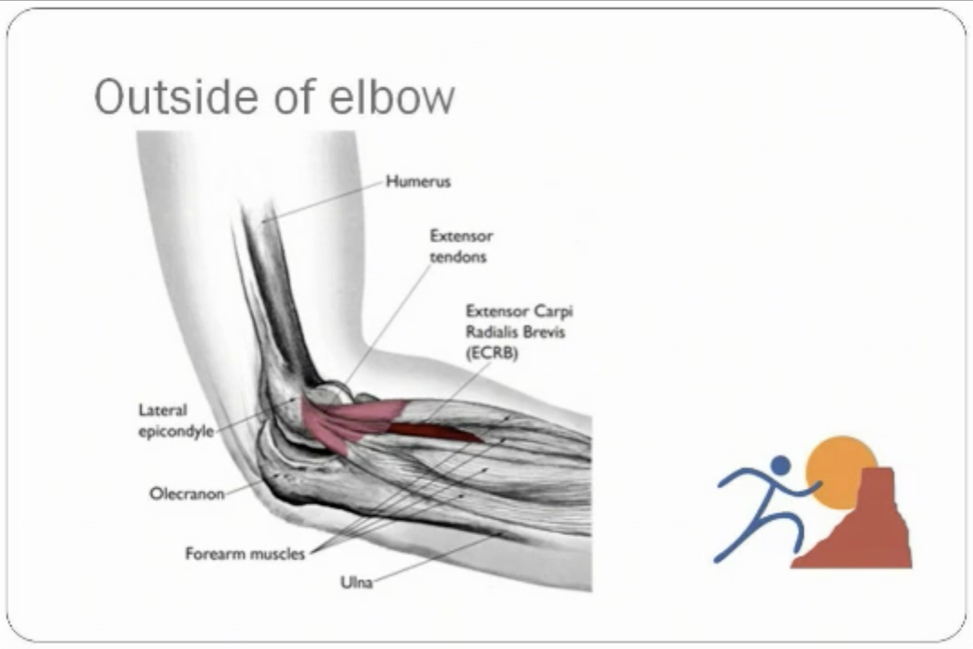Diagnosing and Treating Tennis Elbow
December 29, 2022
Today, we’ll be exploring a painful condition that can occur around the elbow and treatments available to reduce or eliminate the pain. This condition used to be called tennis elbow syndrome but, in fact, rarely happens to those who play tennis.
Understanding Your Joints
The elbow is a joint that connects three bones, the arm bone or humerus and the two long bones of the forearm called the radius and ulna. This combination of bones makes for a very flexible and durable structure capable of handling lots of force and energy.
The structure allows the elbow to move back and forth, as well as rotate the wrist and palm up or down. The upper arm bone also serves as an anchor for the muscles that move the wrist up and down.
Tension from Gripping
When we close our hands to grip an object, the wrist muscles are also activated to bring the back of the hand upwards. This activation allows the fingers to hold the thing firmly. For as long as the grip is maintained, the wrist muscles are under tension.
One of the wrist muscles on the outside of the elbow has a relatively small attachment point and tends to wear down over time. When the tissue breaks down from repeated use mechanically, the body will try to protect itself by sending the brain an important message, “pain.” When the body needs to rest something from repeated use, pain is a natural way to tell the brain that it needs time to recover.
Diagnosing Tennis Elbow
While commonly known as tennis elbow, the medical term for this condition is lateral epicondylitis. The medical words describe damage to the muscle-tendon attachments outside the elbow.
The same type of problem can occur on the inside of the elbow and is called medial epicondylitis or sometimes “golfer’s elbow.” In either condition, the problem is caused by repeated use of the extremity over time that causes the mechanical breakdown of the tissue.
How Does it Happen?
The condition is more common in the dominant extremity and in lifestyles and occupations that require repeated gripping, lifting, and carrying. This injury is widespread in the construction trades.
When the condition is caused by recreational activities, decreasing the intensity and frequency of the movement is an essential first step in caring for epicondylitis.
Occupational Injuries
The problem exists when the condition is part of the essential employment activities, and it is difficult to adjust an individual’s work responsibilities without affecting productivity and job performance.
This medical problem is referred to as a chronic repetitive use injury. It is usually covered by worker’s compensation insurance if appropriately diagnosed and reported to the employer.
Diagnosis
To diagnose the condition, x-rays, a physical examination, and a review of the medical facts around the problem are necessary. Advanced imaging, such as an MRI, is not generally needed.
Treatments for Tennis Elbow
Treatment for lateral epicondylitis is initially directed at protecting the damaged tendon attachment. Changing the frequency and intensity of hand use is very important to allow for recovery.
Treatments at Home
Braces that limit wrist movement or apply a force around the elbow can be helpful, as they decrease the energy at the attachment site. Anti-inflammatory medications such as ibuprofen or naproxen are helpful, as well as applying hot or cold packs to the painful site twice daily. The temperature change to the skin increases blood flow to the area and accelerates the body’s healing potential.
Doctor-Prescribed Treatments
A beneficial treatment is the injection of cortisone into the site of pain, as it can alter the tissue response and decrease the chemical messengers that cause pain in the first place.
While most persons respond to these treatments, the longer the symptoms have been present and the more intense they are, the longer recovery will generally be. During the recovery phase, the symptoms could return at any time.
This is why the condition is so challenging to correct in the workplace setting, as the person is constantly expected to return to the activity that played a role in causing the problem.
When to Consider Surgery
After several months of care, if there is no significant improvement, a surgical option is available. The surgical treatment involves the removal of the damaged tendon site and sometimes a tiny piece of bone, then re-attaching the tendon back onto the elbow.
In this process, the tendon is “re-potted,” and a new attachment can regenerate. The regenerated tendon is stronger than the one that had become damaged.
Recovering From Surgery
An approximate 2-3 month recovery phase following surgery will severely limit hand use, but it must be followed to benefit from the procedure fully. Undergoing any type of surgical procedure is a decision that must be made carefully by both the surgeon and the patient.
All surgical procedures have risks, and infection, joint stiffness, or weakness can occur after any surgical procedure. Fortunately, there is an exceedingly high success rate for those needing surgical care for their epicondylitis.
For help diagnosing and treating tennis elbow, contact Dr. Clark and The Bone and Joint Center of Yuma.